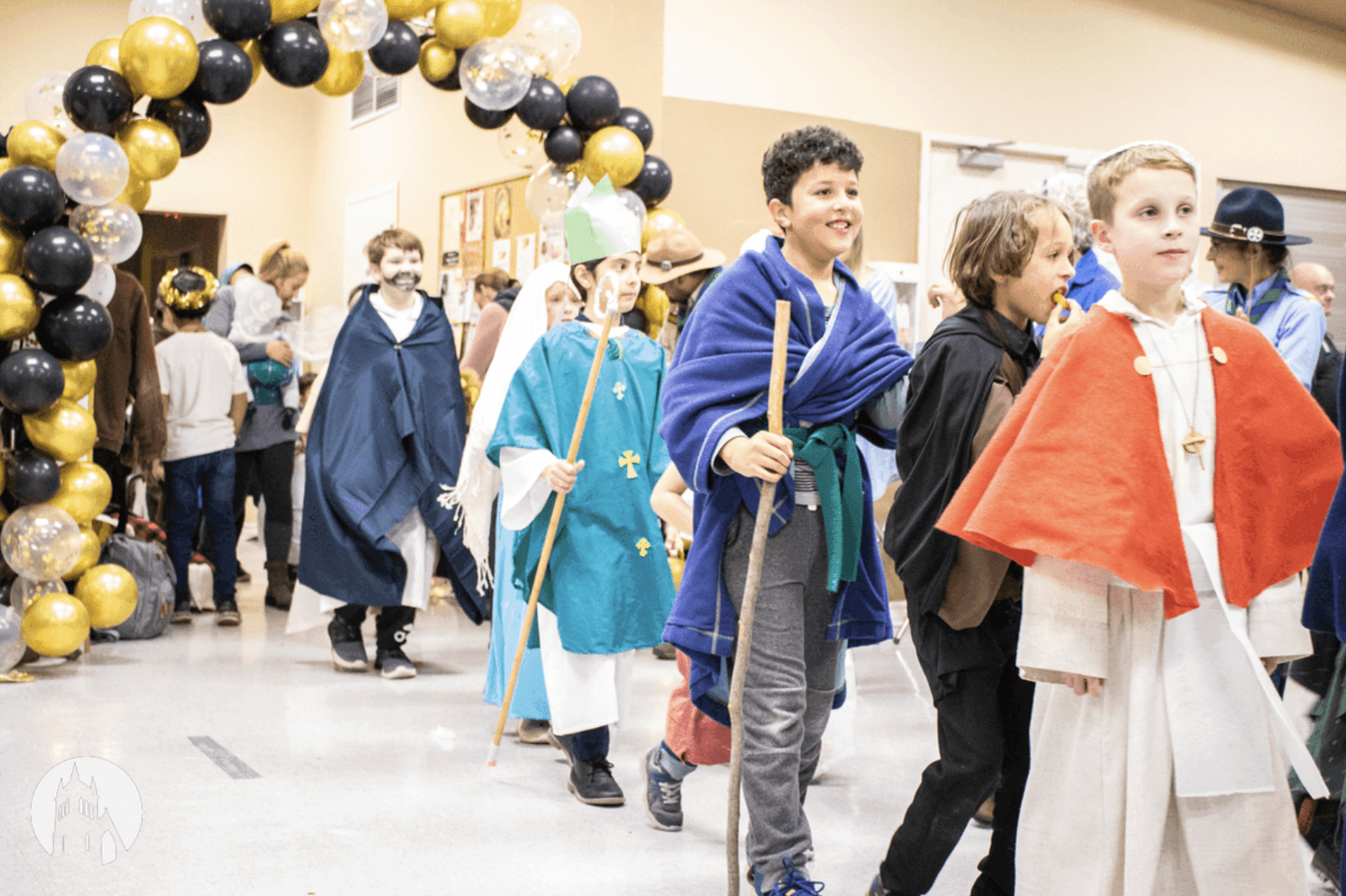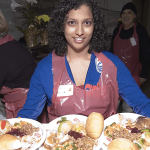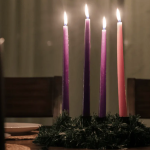While keeping Christ in Christmas has long been a tagline to preserve the religious significance of Our Lord’s birth date, Catholics are increasingly pushing to put the “halo” back in Halloween and reclaim the festivity’s Catholic roots.
Two Ontario parishes — St. Mary’s in Ottawa and St. John of the Cross in Mississauga — will be hosting another yearly instalment of an All Saints’ Eve party in their halls. There, families are invited to join in a Catholic alternative to the modern practice of celebrating Halloween, having young trick or treaters dress up as their favourite saint or Biblical character for a night of fun, games and sweet treats.
In the nation’s capital, St. Mary’s had been offering the party-style event since the early 2000s. After attending for years as a child, St. Mary’s communications and technology manager Zac Duval has taken up coordinating the party for the past three years. Together, he and his wife have been bringing new life back to a St. Mary’s tradition.
With Duval and his family as no exception, the current state of Halloween and how it’s often celebrated and portrayed by the media at large has become a discussion many Catholic families find themselves having as the observance strays further and further from its original roots.
“I think every Catholic family has to deal with the Halloween issue, and we felt like it was important not to shelter our kids from Halloween, but to show them how to celebrate it properly and to teach them what it’s actually about — celebrating the saints and reflecting on life after death in a healthy way,” he said.
Halloween as we know it originated as All Hallows’ Eve, a vigil for the Catholic feast of All Saints’ Day, commemorated on Nov. 1. But over the years it has become all commercialized, with candy, costumes, spooky decorations and horror-themed delivery taking over. The word itself is derived from older English terms, “hallows,” meaning “holy,” and “e’en,” rooted in the word “evening,” referencing the Vigil of the feast.
Nov. 2 is All Souls’ Day, the Church commemoration for the faithful departed still detained in Purgatory, adding to the Catholic roots of the season. Even time-tested, synonymous traditions like trick-or-treating evolved from earlier religious-themed customs, where small amounts of food or treats were given in exchange for prayers for the dead in places like Scotland and Ireland.
Today, those early commemorations and practices are less and less prominent. This time of year indeed represented something of a smaller triduum between All Saints Day, All Hallows’ Eve and All Souls Day, marking one of the most important times of the liturgical year. Worse yet than being simplified and almost forgotten, according to Duval, a father of three young children, are the elements of the holiday that continue to replace the traditional ones.
“We notice other kids walk past a house that’s decorated a certain way that is scary, and other parents tell their kids they don’t have to be scared… I’m thinking, ‘No, that’s a normal reaction to these things,’” he said.
“Halloween in general has really been distorted, and everyone can see that it’s more than just going out in a costume and getting candy. No one has a problem with that, but lately there seems to be an intent to scare and to celebrate, or at least promote, things that are real and harmful.”
With feelings that Catholics were missing an opportunity here to educate and celebrate a major, now nearly lost feast day, Duval and his family revived the All Saints’ Party, with the night of Oct. 31 set for its latest offering. As in previous years, different games to win candy, pre-purchased food and treats, saints’ trivia and even a costume parade at the end of the evening to the tune of “When the Saints Go Marching In” as a nod to the party’s theme.
Past events have included games curated by the Ottawa chapter of the Federation of North American Explorers, a Catholic scout group, with themed games like “bobbing for halos” using powdered donuts and a costume guessing game. Duval said the overarching concern of the evening, even above education, is fun.
“Ultimately, we want kids to have a joy-filled night and a positive experience, especially if you’re going to school with other kids and feel like you’re missing out on something. We’ve made it so they can go to their friends and say, ‘Look, I got lots of candy too.’”
There appears to be a growing desire for such an alternative as past events have seen upwards of 100 in attendance, with approximately 70 to 80 children partaking in the festivities.
At Mississauga’s St. John of the Cross Parish, its Knights of Columbus Our Lady of Mount Carmel Council hope for the same as it celebrates its sixth annual Halloween party on Oct. 31.
St. John of the Cross’s inspiration is more defined than St. Mary’s, stemming from past Grand Knight Loyola Tavares’ experience at a spiritual warfare seminar, hearing the testimony of Zachary King, a former Satanic high wizard.
“I remember it opened my eyes to truly understand what happens on Halloween, how Satan entices people right from the time they are children, how he got hooked into it and what actually goes on on that darkest night,” he recalled.
After a conversation with his family, Tavares knew an alternative for his parish was needed.
“Deacon Ferdinand D’Souza brought to my attention something called the Night of Light, which was started in Ireland, and we adapted that to our parish,” he said. “It’s Holy Mass, adoration and exposition of the Blessed Sacrament, and then adults and children are invited to a party with saint costumes, food and Christian song and dance.”
Tavares said that upwards of 120 people attended last year’s festivities, growing from a modest 45 in its first year back in 2019. As with Duval, he predicts similar All Saints’ offerings will continue to pop up around the province — noting Mississauga’s Sts. Peter and Paul and St. Charbel Maronite Parish host similar celebrations.
“These days, the Church shines when it is providing an alternative to a culture that most people see as harmful or as falling off the cliff. How does the Church respond through its parish communities? You have to provide alternatives, and that’s what this is, even though it’s a reflection of what Halloween is in nature,” Duval said.
“This is something very close to my heart, and I’m glad we are able to continue celebrating with kids. It’s something we can’t take away from them,” Tavares said.





Thank you for highlighting in this article the importance of reclaiming the true meaning of All Hallows’ Eve. May our children grow in their knowledge and love of our holy saints, and be inspired to live their lives in Jesus Christ and for Jesus Christ. The good seeds we plant today will, in His perfect time, bear fruits of love, joy, and peace.